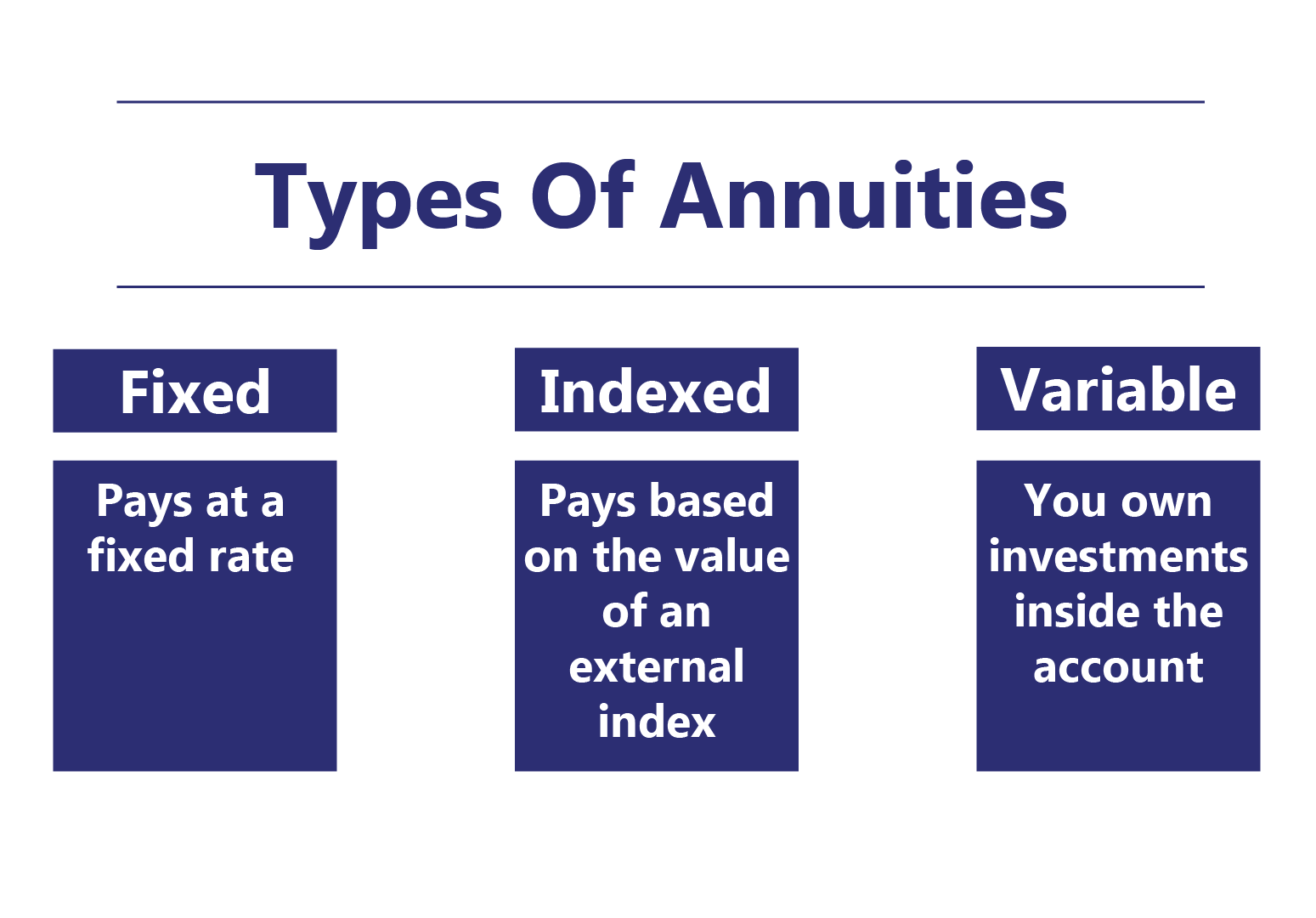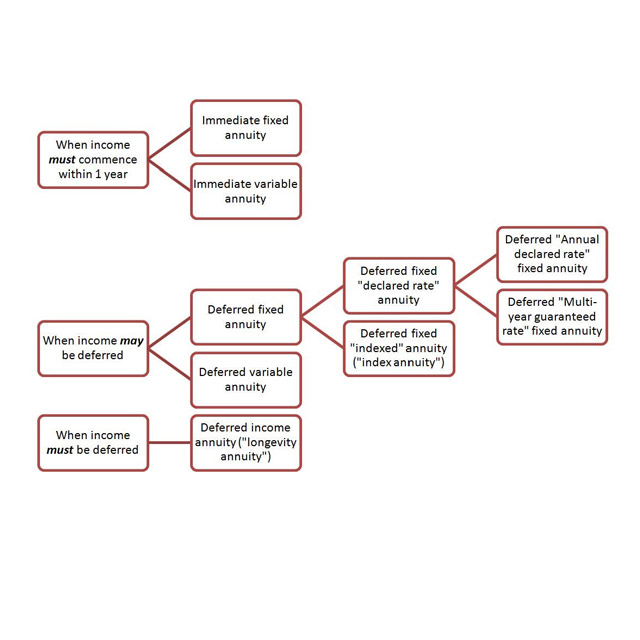All Categories
Featured
Table of Contents
Just as with a fixed annuity, the proprietor of a variable annuity pays an insurer a swelling sum or collection of payments in exchange for the assurance of a series of future repayments in return. As discussed above, while a taken care of annuity grows at a guaranteed, continuous rate, a variable annuity expands at a variable rate that depends upon the performance of the underlying investments, called sub-accounts.

During the accumulation phase, assets purchased variable annuity sub-accounts grow on a tax-deferred basis and are exhausted just when the agreement owner takes out those profits from the account. After the accumulation phase comes the income stage. Over time, variable annuity possessions must in theory enhance in worth till the agreement proprietor decides she or he would love to begin withdrawing cash from the account.
One of the most substantial problem that variable annuities typically present is high cost. Variable annuities have a number of layers of fees and expenditures that can, in aggregate, create a drag of as much as 3-4% of the contract's worth annually. Below are one of the most usual charges related to variable annuities. This cost makes up the insurance company for the risk that it thinks under the regards to the contract.
Analyzing Fixed Indexed Annuity Vs Market-variable Annuity A Comprehensive Guide to Fixed Vs Variable Annuity What Is the Best Retirement Option? Benefits of Choosing the Right Financial Plan Why What Is A Variable Annuity Vs A Fixed Annuity Matters for Retirement Planning Fixed Vs Variable Annuities: Simplified Key Differences Between Different Financial Strategies Understanding the Risks of Long-Term Investments Who Should Consider Variable Vs Fixed Annuities? Tips for Choosing the Best Investment Strategy FAQs About Planning Your Financial Future Common Mistakes to Avoid When Planning Your Retirement Financial Planning Simplified: Understanding Your Options A Beginner’s Guide to Smart Investment Decisions A Closer Look at How to Build a Retirement Plan
M&E cost charges are calculated as a portion of the agreement value Annuity issuers hand down recordkeeping and various other administrative costs to the agreement owner. This can be in the form of a flat yearly fee or a portion of the agreement value. Administrative costs may be consisted of as part of the M&E threat cost or might be evaluated individually.
These fees can range from 0.1% for passive funds to 1.5% or more for actively taken care of funds. Annuity agreements can be tailored in a number of means to offer the particular requirements of the agreement proprietor. Some usual variable annuity motorcyclists consist of guaranteed minimal buildup advantage (GMAB), assured minimum withdrawal benefit (GMWB), and guaranteed minimum income advantage (GMIB).

Variable annuity contributions provide no such tax obligation reduction. Variable annuities have a tendency to be highly ineffective lorries for passing wide range to the following generation because they do not enjoy a cost-basis modification when the original contract proprietor passes away. When the owner of a taxable financial investment account dies, the price bases of the financial investments held in the account are changed to mirror the market prices of those investments at the time of the owner's fatality.
Analyzing Tax Benefits Of Fixed Vs Variable Annuities A Closer Look at Fixed Interest Annuity Vs Variable Investment Annuity Breaking Down the Basics of Annuities Variable Vs Fixed Features of Variable Annuity Vs Fixed Indexed Annuity Why Choosing the Right Financial Strategy Matters for Retirement Planning Fixed Vs Variable Annuity: A Complete Overview Key Differences Between Tax Benefits Of Fixed Vs Variable Annuities Understanding the Rewards of Long-Term Investments Who Should Consider Strategic Financial Planning? Tips for Choosing the Best Investment Strategy FAQs About Indexed Annuity Vs Fixed Annuity Common Mistakes to Avoid When Planning Your Retirement Financial Planning Simplified: Understanding Annuity Fixed Vs Variable A Beginner’s Guide to Immediate Fixed Annuity Vs Variable Annuity A Closer Look at How to Build a Retirement Plan
Such is not the instance with variable annuities. Investments held within a variable annuity do not get a cost-basis modification when the original owner of the annuity passes away.
One considerable concern associated with variable annuities is the capacity for disputes of interest that might feed on the component of annuity salespeople. Unlike an economic advisor, that has a fiduciary duty to make financial investment choices that benefit the customer, an insurance coverage broker has no such fiduciary commitment. Annuity sales are highly lucrative for the insurance professionals that market them due to high in advance sales commissions.

Several variable annuity agreements include language which puts a cap on the portion of gain that can be experienced by specific sub-accounts. These caps stop the annuity proprietor from fully joining a portion of gains that could otherwise be enjoyed in years in which markets produce considerable returns. From an outsider's point of view, it would seem that investors are trading a cap on financial investment returns for the aforementioned guaranteed floor on investment returns.
As kept in mind over, surrender charges can badly restrict an annuity proprietor's capability to relocate possessions out of an annuity in the early years of the agreement. Additionally, while many variable annuities enable contract owners to take out a defined quantity throughout the buildup stage, withdrawals yet quantity generally cause a company-imposed fee.
Withdrawals made from a set rates of interest financial investment option might also experience a "market value adjustment" or MVA. An MVA adjusts the value of the withdrawal to show any type of modifications in rate of interest from the moment that the cash was bought the fixed-rate option to the time that it was withdrawn.

Quite frequently, even the salespeople who market them do not completely comprehend just how they function, therefore salesmen occasionally victimize a customer's emotions to market variable annuities as opposed to the advantages and viability of the items themselves. Our team believe that financiers ought to fully comprehend what they possess and how much they are paying to own it.
Highlighting Variable Annuity Vs Fixed Annuity A Comprehensive Guide to Annuities Fixed Vs Variable Defining Variable Annuity Vs Fixed Indexed Annuity Features of Smart Investment Choices Why Choosing the Right Financial Strategy Matters for Retirement Planning How to Compare Different Investment Plans: Simplified Key Differences Between Different Financial Strategies Understanding the Risks of Long-Term Investments Who Should Consider Annuity Fixed Vs Variable? Tips for Choosing Fixed Vs Variable Annuity Pros Cons FAQs About Planning Your Financial Future Common Mistakes to Avoid When Planning Your Retirement Financial Planning Simplified: Understanding Variable Vs Fixed Annuities A Beginner’s Guide to Fixed Vs Variable Annuity Pros Cons A Closer Look at How to Build a Retirement Plan
Nonetheless, the exact same can not be said for variable annuity assets kept in fixed-rate financial investments. These properties legitimately belong to the insurer and would certainly as a result be at threat if the business were to fall short. Similarly, any guarantees that the insurance firm has actually consented to supply, such as a guaranteed minimal earnings benefit, would certainly remain in question in case of a service failure.
Consequently, possible purchasers of variable annuities need to comprehend and think about the monetary condition of the providing insurer before participating in an annuity agreement. While the benefits and downsides of different kinds of annuities can be debated, the actual problem bordering annuities is that of suitability. In other words, the question is: who should own a variable annuity? This question can be challenging to address, offered the myriad variations offered in the variable annuity world, yet there are some fundamental standards that can assist capitalists make a decision whether annuities must play a role in their economic strategies.
As the saying goes: "Buyer beware!" This short article is prepared by Pekin Hardy Strauss, Inc. Variable annuity features. ("Pekin Hardy," dba Pekin Hardy Strauss Riches Monitoring) for informative purposes only and is not meant as an offer or solicitation for company. The details and data in this short article does not make up legal, tax obligation, audit, financial investment, or other professional advice
Table of Contents
Latest Posts
Understanding Choosing Between Fixed Annuity And Variable Annuity Everything You Need to Know About Financial Strategies Defining the Right Financial Strategy Features of Smart Investment Choices Why
Highlighting Fixed Vs Variable Annuity Pros Cons Everything You Need to Know About Indexed Annuity Vs Fixed Annuity What Is Annuity Fixed Vs Variable? Advantages and Disadvantages of Different Retirem
Highlighting the Key Features of Long-Term Investments A Closer Look at What Is A Variable Annuity Vs A Fixed Annuity Breaking Down the Basics of Investment Plans Pros and Cons of Various Financial Op
More
Latest Posts